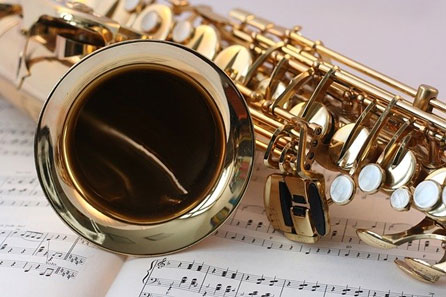
Before our ancestors learned to create music with their voice, they were already using instruments that produce sound to communicate with each other. Later they used the same instruments to create sound that entertain rather than just send signal. They experimented on a vast array of materials, including wood, bone, and animal hives to produce louder sound and a greater variety of tunes. This desire for better music has remained insatiable to this day so much so that new musical instruments arise from every generation.
A Revolutionary Moment
Until the end of the Paleolithic Era, all musical instruments are made from organic materials. Thanks to the discovery of metal and to the blacksmiths who explored them, we’ve managed to expand the resources we use to create musical instruments. As a result, we’ve also covered multiple levels of the sound spectrum, which explains why we have so many musical genres and styles today.
Just between the Copper Age and the Iron Age, the evolution of musical instruments had already come a long way. One thing hasn’t changed since then, though—most metallic musical instruments are made of brass. While many other metals have been used for making musical instruments, brass seems to always steal the spotlight. In fact, there’s an entire family of musical instruments called “brass instruments”.
The Brass Family
Musical instruments are classified according to their body structure, operation, and the sound they create. The type of material they are made of isn’t really considered of great importance at least by those who don’t understand its impact on the quality of sound produced by the instruments. The brass family, for instance, refers to musical instruments that produce sounds of different pitches by buzzing the lips together into their mouthpiece. It just so happens that all these instruments are mostly made of brass.
The brass family consists of five major instruments, each of which produces a different kind of sound. Trumpet and cornet are the smallest in the family and produce high-pitch sound. Slightly larger than them is the French horn, which has a low-pitch sound. Trombone, like the French horn, is a bass instrument, but it uses a slide to change pitches instead of valves or keys. Another key member of the family is the baritone, which is considered a hybrid of trumpet and tuba. Lastly, the largest of the family and produces the lowest tone is the tuba.
What is brass?
Copper is one of the first metals discovered and exploited by man. Ancient artifacts, including primitive working tools and accessories, made of this metal that have survived to this day are a proof of that. For over 5,000 years, copper, in its pure form, had fueled the earliest industries until bronze was discovered. Bronze is an alloy of copper and tin. It became more popular than copper to a point that an entire era was named after it.
Then another popular copper alloy came along by accident about 3,500 years later. Early metallurgists discovered this metal when they were extracting copper from zinc-rich ore. They weren’t able to separate copper from other contaminants but not from zinc, so instead of producing pure copper, they produced a metal that’s a little bit harder, more malleable, and less pliant than bronze. They called it brass.
Why is brass used for musical instruments?
As previously mentioned, there’s a bunch of musical instruments out there that are made mainly of brass. Manufacturers of these new and used brass musical instruments claim that brass produces the best acoustics. However, many argue that other materials, such as silver, bronze, and even plastic are capable of producing the same quality of sound brass produces. So what sets brass apart from other materials and why are musical instruments made of brass?
An experiment conducted by Richard Smith, the owner of Smith Watkins, a prominent maker of musical instruments, has revealed that there’s a plethora of factors that influence the quality of sound a musical instrument produces, including the shape and dimension of every component. Materials, as Smith puts it, are just the icing at the top. Arguably though, certain conditions have to be met to achieve and maintain the right shape and dimension needed to create quality sound, and these conditions are directly influenced by the material used to make the instrument.
Unlike other materials, brass used for musical instruments is extremely malleable. Meaning, it can be stretched, hammered, or rolled into thin sheets or plates without breaking. It’s also very easy to form into tubes, which make up most brass and woodwind instruments. Plus, brass has a close resemblance to gold, giving musical instruments added elegance to their appearance.
Of course, to produce the highest quality musical instruments from brass, you have to make sure that your materials come from the right sources. When it comes to copper alloys and other metal supplies, only trust copper and brass suppliers that have been around for a long time, such as Rotax Metals. They have the best foundries and they use the latest technology available in their manufacturing processes.
Sources:
https://www.tms.org/pubs/journals/jom/0708/roncone-0708.html

